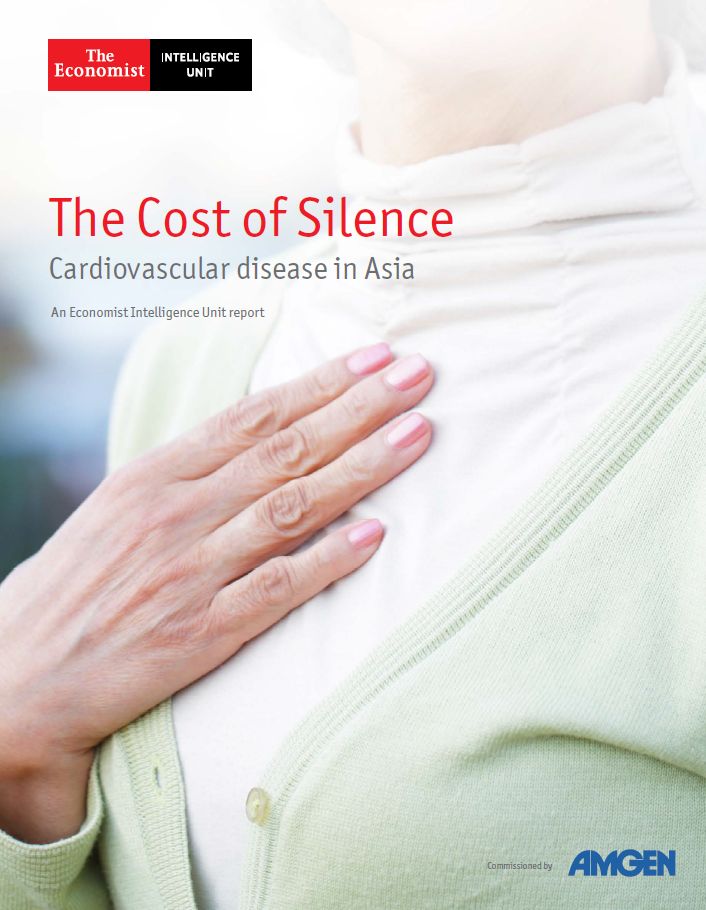The Cost of Silence: Cardiovascular disease in Asia is a report by The Economist Intelligence Unit and EIU Healthcare. It provides a study of the economic impact of CVD risk factors on the following Asian markets: China, Australia, Hong Kong, Japan, Singapore, South Korea, Taiwan and Thailand.
Specifically, the study captures the cost of ischaemic heart disease (IHD) and stroke. IHD, also called coronary heart disease (CHD) or coronary artery disease, is the term given to heart problems caused by narrowed heart (coronary) arteries that supply blood to the heart muscle, which can lead to stable angina, unstable angina, myocardial infarctions or heart attacks, and sudden cardiac death. Stroke is characterised by the sudden loss of blood circulation to an area of the brain due to blockage of brain vessels, or a haemorrhage or blood clot.
This study further combines an evidence review of existing research on CVDs and primary research in the form of expert interviews.
Key findings of the report are as follow:
- The rising incidence of CVD poses a substantial challenge to Asia-Pacific markets
- The four main modifiable cardiovascular risk factors pose a communications challenge for governments and health agencies.
- Hypertension is the risk factor that contributes the highest cost.
- The costs of CVDs are not fixed. Greater awareness and policymaker attention can substantially reduce CVD costs as many obstacles and corresponding solutions have been identified as effective.
- Policy options for primary prevention include choice “nudges”.
- Effective secondary prevention can also significantly affect costs and outcomes.







